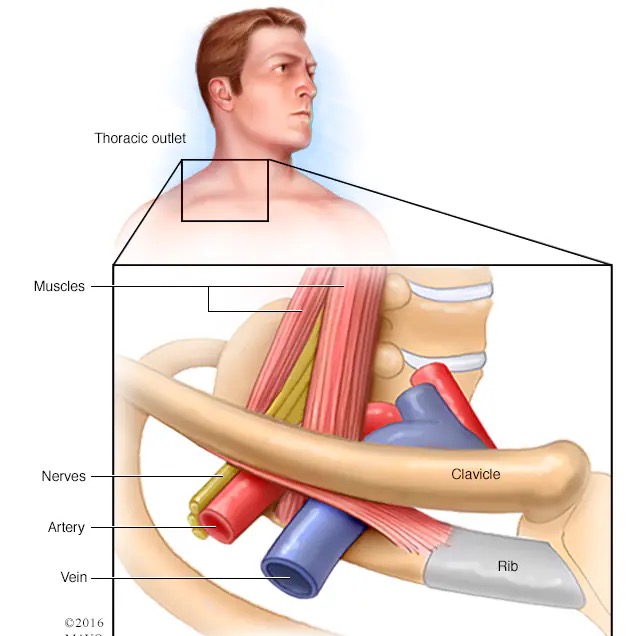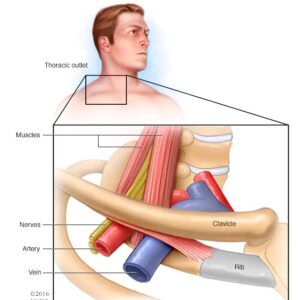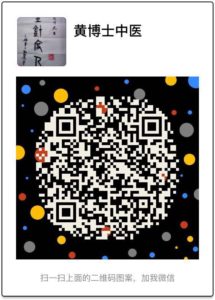
[PhD Win medical case] shoulder severe pain | frozen shoulder | hand skin color change | my opinion | Thoracic outlet syndrome
Please schedule an appointment by clicking the link below:

He is a patient who I met today, it is a very interesting medical case. He comes to see me for his frozen shoulder, his shoulder pain started from end of January, he could not move his left shoulder due to a sharp pain, he went to the physiotherapist who thought it was a frozen shoulder, did ultrasound, X-ray, and saw a specialist who did steroids injection, not much improvement. His friend recommended me to him, he wants to do acupuncture. When I asked his case history, he tells me his hand color changed when his shoulder had severe pain, so I don’t think his shoulder pain is only frozen shoulder, then I did a neurological examination for him.
I found his left arm reflex is lower than right,
Left arm feels dull,
Muscle power is normal,
More Tenderness in the point under collarbone and the pain radiates down to left arm,
So I think it is a Thoracic outlet syndrome (the point between collarbone and first rib)
His shoulder pain is neuralgia, his [frozen shoulder] is due to the severe pain, and frozen shoulder is the second symptom.
what do you think ?
Thanks
My opinions
1, How should a therapist think of the case when you meet a patient who says he has a frozen shoulder, shoulder pain, limited movement of the shoulder, Ultrasound report was a inflammation and tendon swelling, the specialist did steroid injection, and the patient has done physiotherapy for his frozen shoulder. I mean it is a frozen shoulder from every evident. I dare say that we will do treatments based on frozen shoulder over 95% therapists.
2, We will get the same results like these therapists who did physiotherapy and injection if we will do treatments for his frozen shoulder. It will get worse and worse, because it is not real frozen shoulder. I do know the fact that it is not real frozen shoulder as his hand has color changes and has numbness in the left arm when he has a severe shoulder pain.
3, We know it is a neuralgia from brachial plexus injury, because we found his arm feels dull, reflex is lower, and the Tinel’s sign positive. in generally, there are three injury points for a brachial plexus injury. They are, scalene muscle point, the point between collarbone with first rib, and pectoralis minor point. There is a more tender point under the left collarbone, and the tenderness radiates to the left arm, so it is a Thoracic outlet syndrome (the point between collarbone and first rib) for this case.
4, Why do I think it is not a real frozen shoulder? First, his hand color changes when he have a severe shoulder pain; Second, there was not good results after physiotherapy and injection, and it got worse and worse.
5, Especially for difficult cases, we will get some important information from case history and physical examination. Then carefully ask the patient, and do every kind of test. Then get a correct diagnosis, and do the correct treatment.
6, I have discussed this with the patient. At the moment we do two steps at the same time, one way is doing acupuncture, another way, he will see a neurological specialist and do CT scans of neck and chest.
7, We will first think of the neuralgia when we do therapy for the case, nor the frozen shoulder, because the frozen shoulder is a second problem, we will look for good ways for the neuralgia. the neuralgia is gone, the frozen shoulder will disappear automatedly.
今天看了一例很有意思的病例,与大家分享。一位60多岁的kiwi,来看他的肩周炎,肩凝症。在问诊时,他说疼痛严重时,手的颜色变紫,这引起了我的警觉。查体时就发现左上肢反射,感觉都有问题,而锁骨下有压痛,并放射到左上肢。标准的一个胸出口综合征。肩痛是神经痛,而肩部的运动受限是疼痛引起的,也可以说肩周炎是继发的。做个【明医】真的很费脑细胞,但也非常有意思。乐在其中吧!视频是YouTube,明天我做一个短视频放里面,给看不了的读者。
there are 6 changes after one session acupuncture.
1, no sharp pain
2, no shooting pain
3, sleep is good
4, more movement of the shoulder
5, happier
6, no more tenderness
Medical Disclaimer
The medical information on any/all of our content is provided as an information resource only, and is not to be used or relied on for any diagnostic or treatment purposes. This information does not create any patient-physician relationship, and should not be used as a substitute for professional diagnosis and treatment. Please consult your health care provider before making any health care decisions or for guidance about a specific medical condition.
 中文微信:nzacupunctureclinic
中文微信:nzacupunctureclinic
Leave a reply